We believe young children should primarily learn through play. We have created flashcards to be used in conjunction with our mat to make learning fun and interactive.
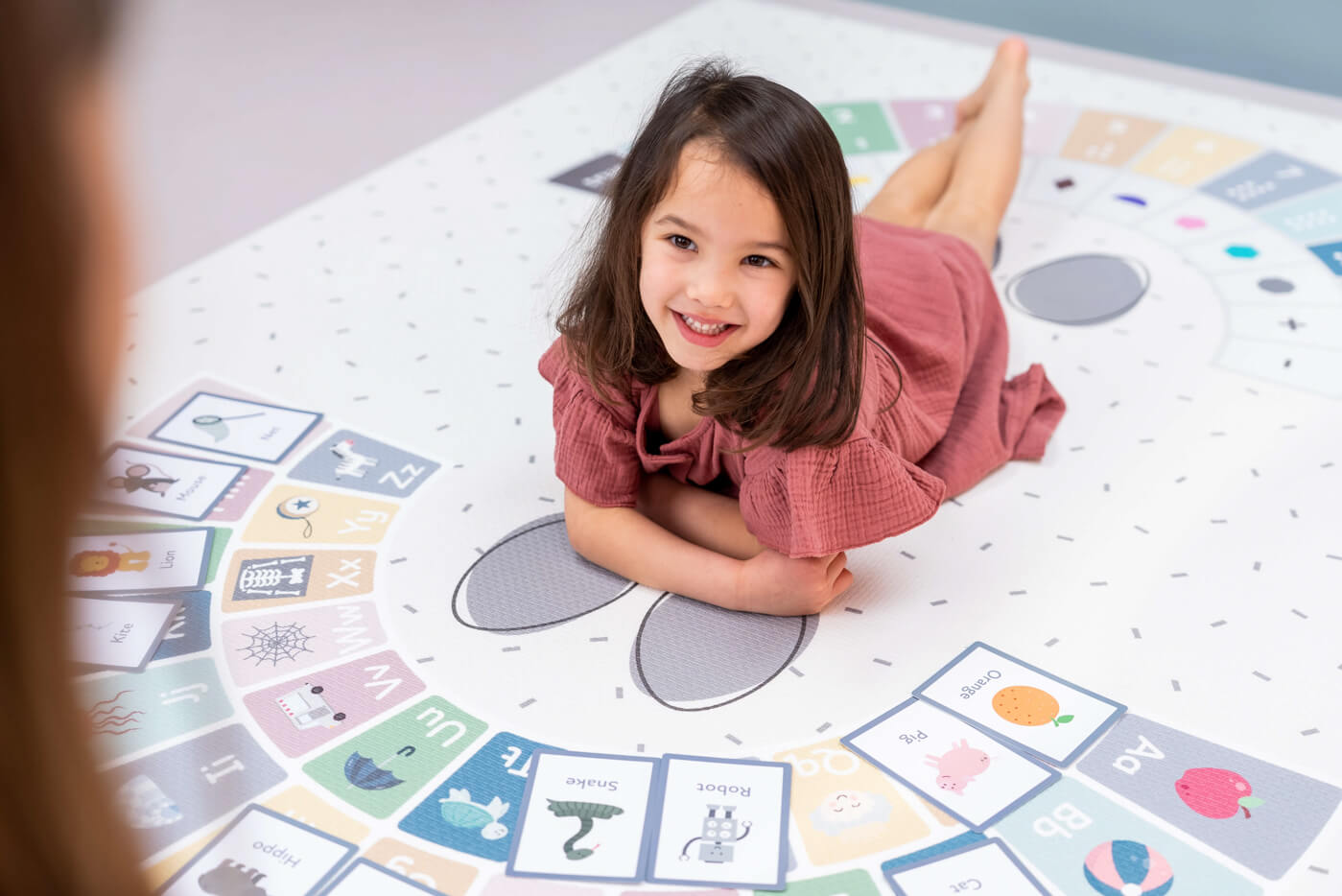
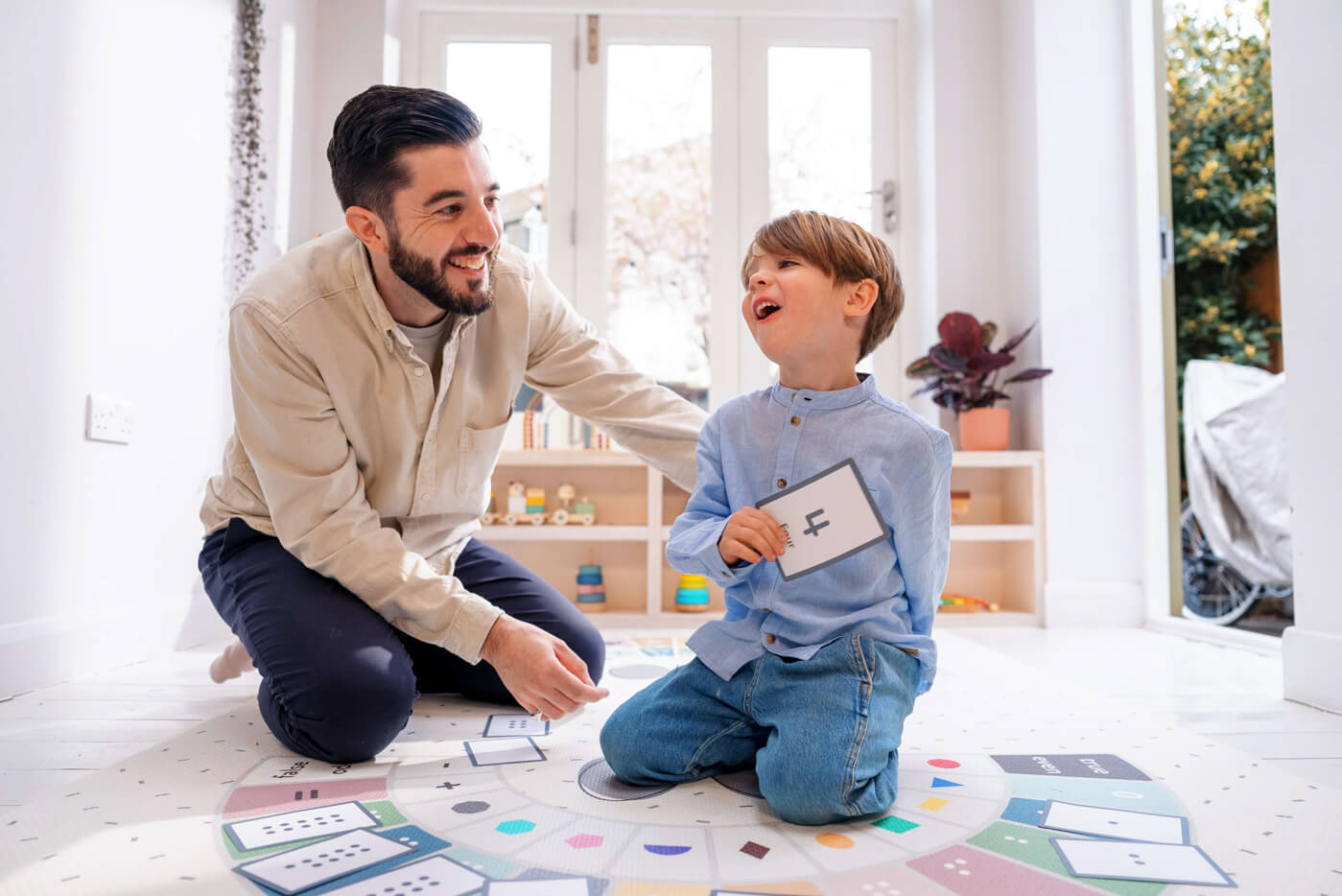
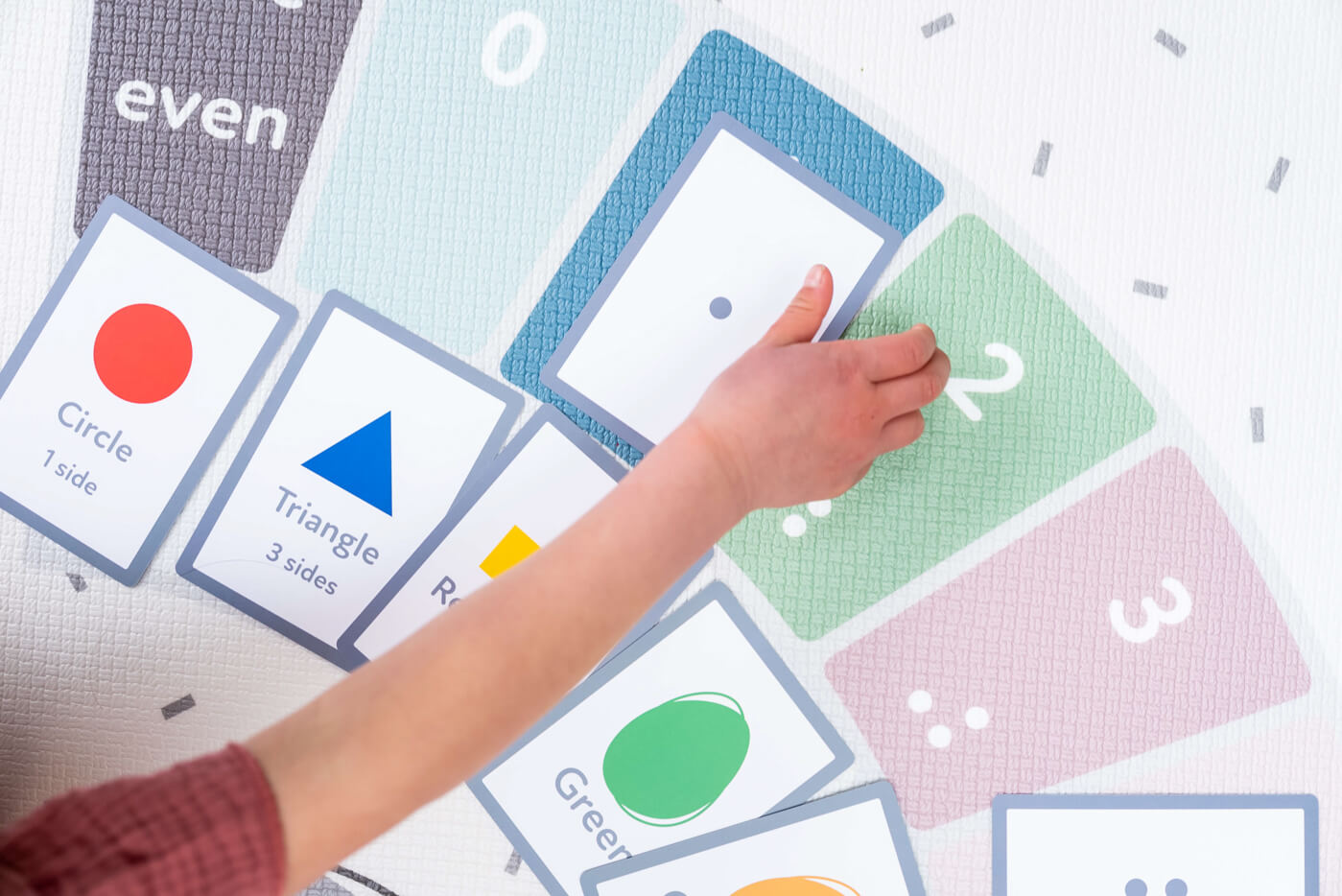
Flashcards can improve cognitive development, improve fine motor skills and stimulate independent thinking. Recommended age 2 years +
- 70 cards including letters, numbers, colours, shapes and pictures.
- Double sided design.
- Each cards is 12.7 cm x 8.9 cm.
- Waterproof and tear-resistant.
- BPA-free plastic coating (Eco varnish).
- Forest Stewardship Council® (FSC).
Pictures
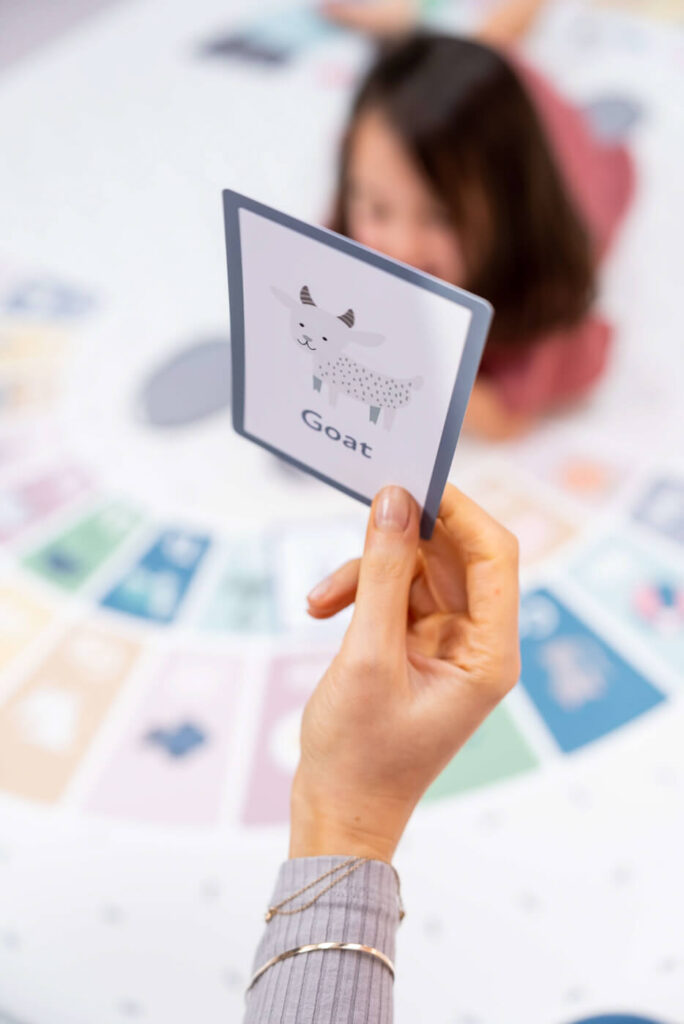
For children aged 1-3, use our flashcards to build their vocabulary and letter/word recognition. Pick a card, say the word out loud pointing to the picture, ask your child to repeat the word, repeat the word if your child struggles to say it.
Once your child becomes more familiar with the flashcards, point to a picture on the playmat or on the card and see if they can say it independently. Alternatively say a word and see if your child can find the image in the pack of flashcards or on the mat.
Animal Actions – Ask your child to pick an animal featured on the mat or flashcard and together act it out. This type of activity will get them to practice their gross motor skills and use their imaginations to pretend to be animals they have seen in books or at the zoo.
For older children use this opportunity to discuss sounds these animals make and where they live – on land or in water.
Letters & Phonics
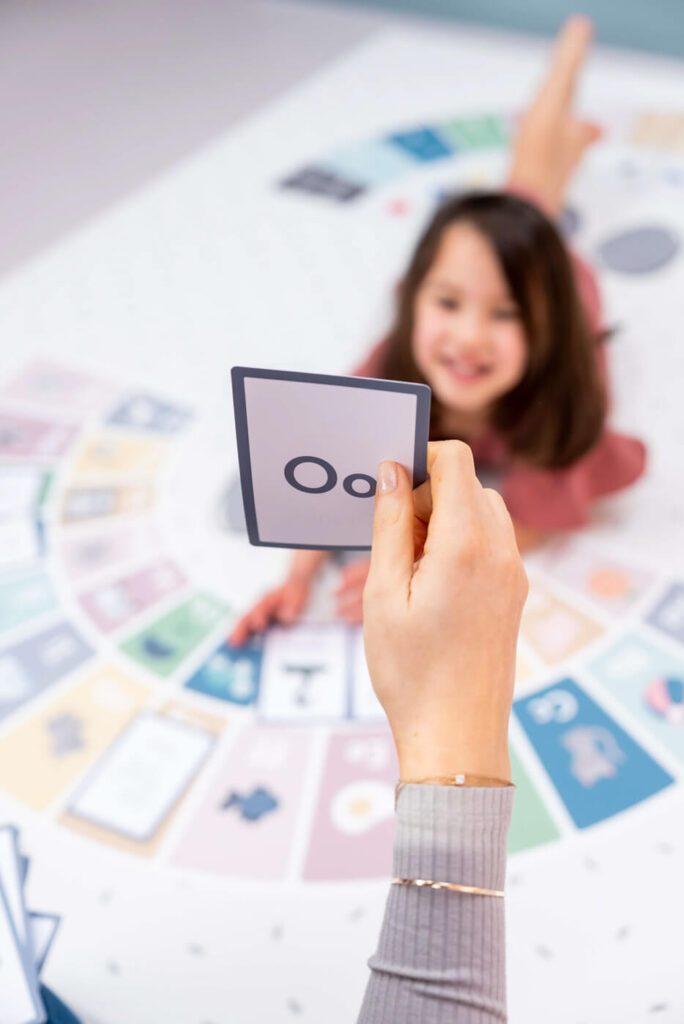
Introducing letters and sounds that make up words, are an ideal way to support your child’s first steps to develop early reading skills and build vocabulary.
Our letter cards show the letter, a full colour illustration to place the sound in context and the spelling of the word to match.
Hold up a card with the letter side facing your child, say the sound (phonetically), ask your child to make the sound with you and then your child alone. Turnover the card, say the word emphasising the sound you are teaching. E.g. ‘ a-pple, apple’
Once your child recognises the letters and their sounds ask them to think of other words that begin with the same sound.
To make it trickier, use the flashcards to make simple words for your child to read or get them to spell a word using a selection of the flashcards.
Colours & Shapes
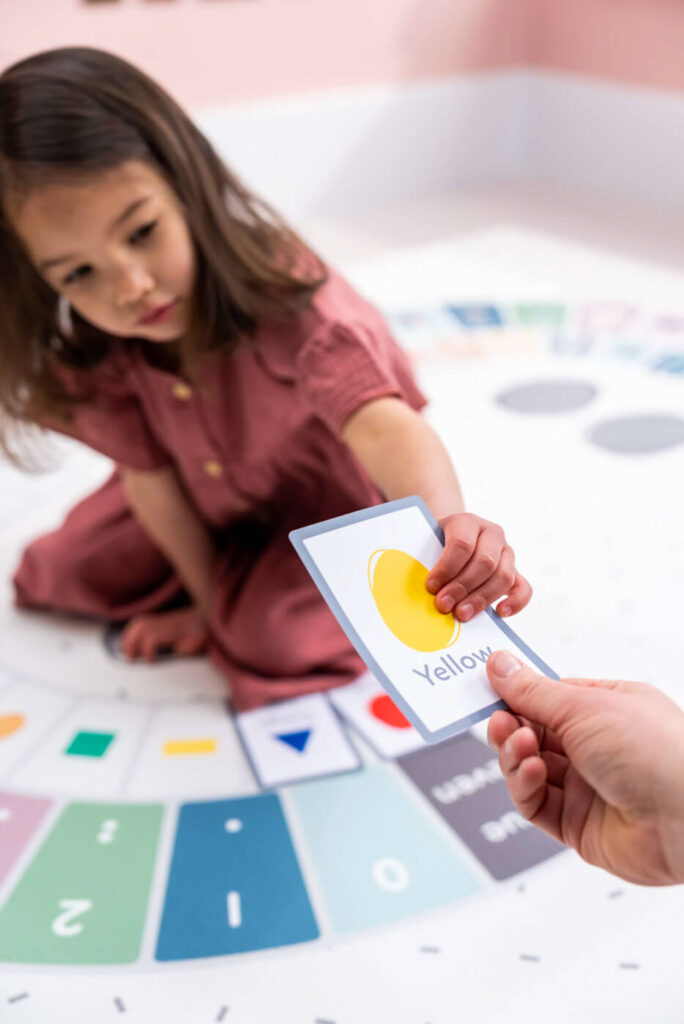
Use the flashcards to introduce some of the common colours and shapes to your child.
Each card has a picture of a coloured shape and both the name of the shape and the colour. Pick a colour card and ask your child if they can find an object around the home that matches it.
Once your child becomes more familiar with the flashcards, point to a shape/colour on the mat or the card and see if they can say it independently. Alternatively say a word and see if the child can find the shape/ colour in the pack of flashcards or on the mat.
Take a card, say the colour and shape and ask your child to draw the shape and colour it in the correct colour.
Pick a colour card and discuss the emotions or feelings that can be associated with that colour. Verbalising feelings can be difficult for young children as they do not have the words to describe them. Colours and art are often used as an alternative way to express these feelings (e.g., happy, sad, angry, scared, surprised, excited). This method helps children recognise, identify and label their feelings, which supports their well-being and builds their emotional vocabulary.
Numbers
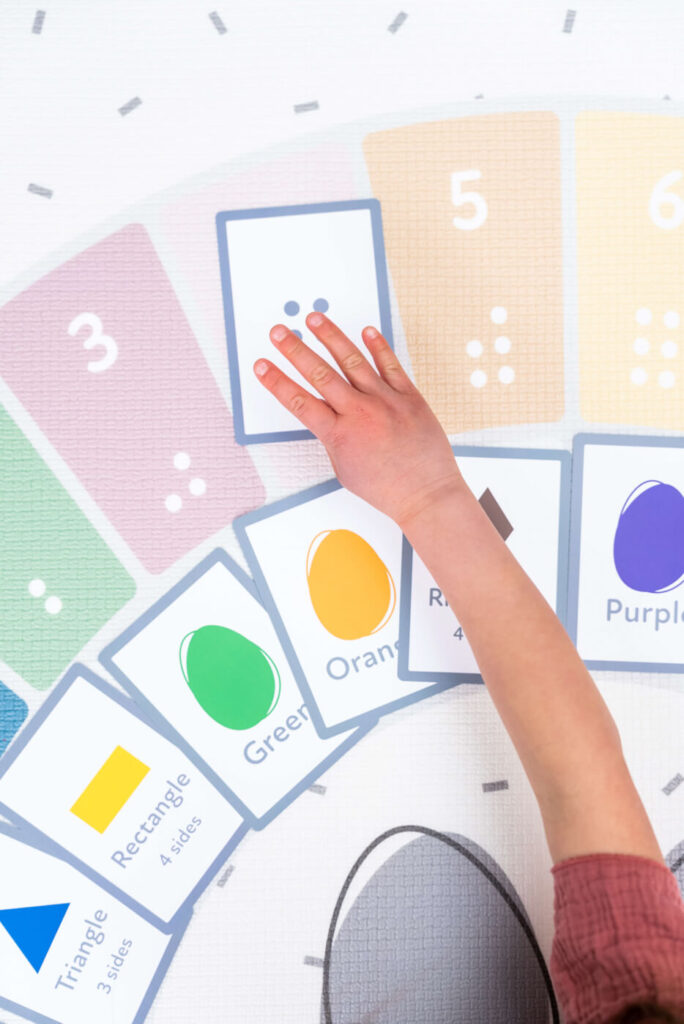
Use the flashcards to make learning numbers and counting fun and practice their math skills with questions and games.
For your child’s first introduction to numbers start by showing the number digit side of the card, say the number, ask your child to repeat the number, turnover the card and count the dots on the back.
Using small toys or objects (e.g., beads, wooden bricks, animal figures) give your child the number digit cards and see if they can match the correct number of objects to the number displayed.
Pick a digit card, ask your child to find the card with the matching number of dots. Keep going until all 20 cards are paired up.
Number Bonds
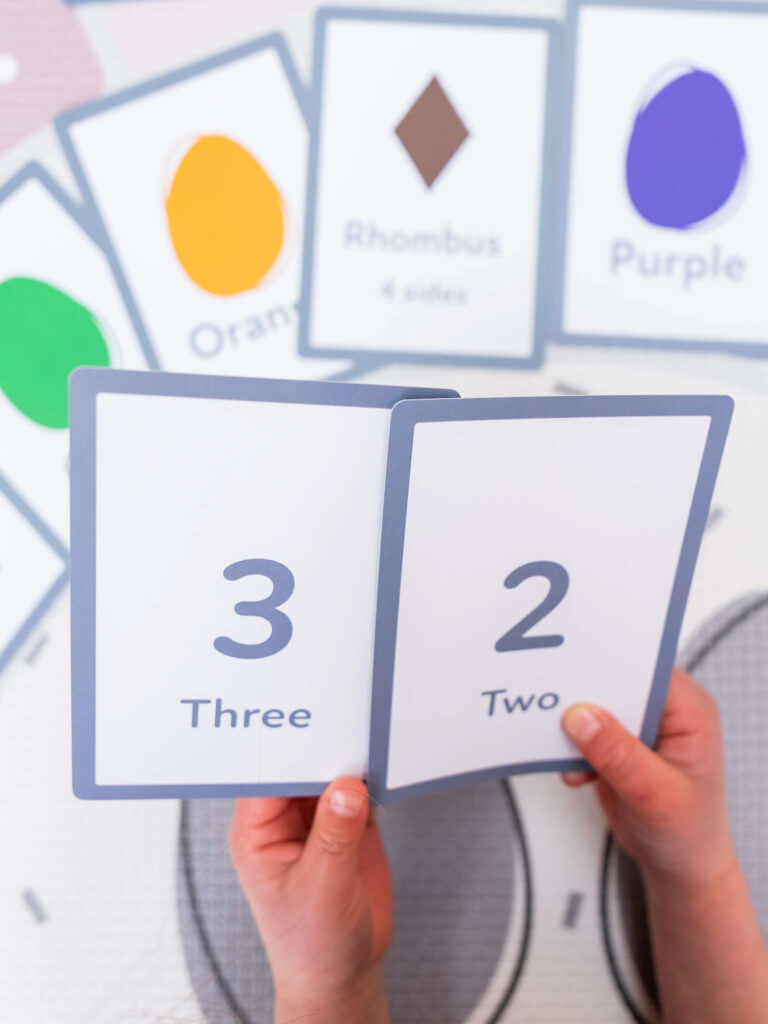
Use the flashcards to create number pairs / number bonds that add up to a specific number. Repetition of this will encourage your child to memorise number bonds up to 10 and 20. This will help them to solve simple addition and subtraction sums much quicker and with more confidence.
E.g. Number Bonds to 10:
- 0 + 10
- 1 + 9
- 2 + 8
- 3 + 7
- 4 + 6
- 5 + 5